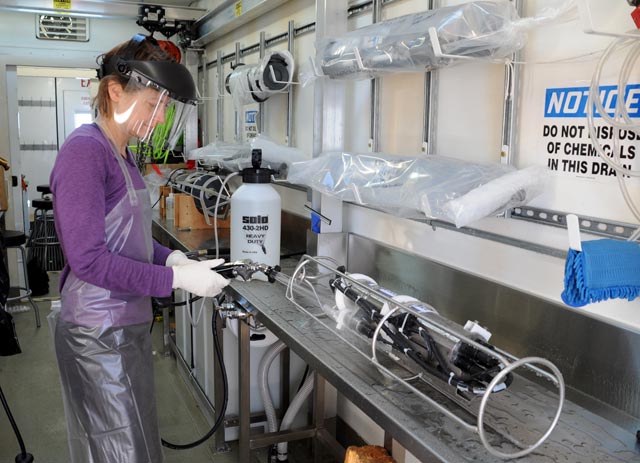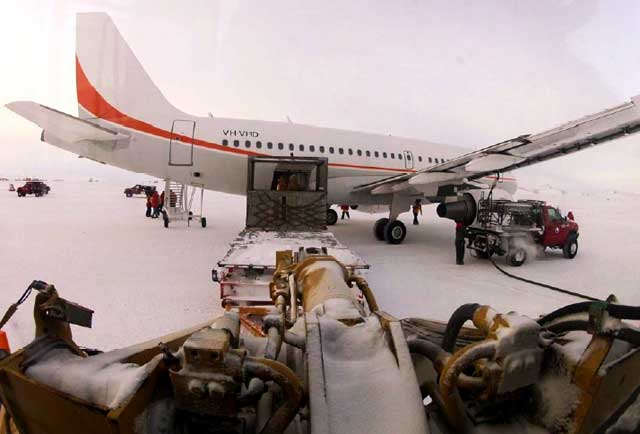|
Season openerTwo-phase winfly operation helps prepare McMurdo for 2013-14 summerPosted September 13, 2013
The skies above McMurdo Station The first plane to touch down at McMurdo Station’s Pegasus Airfield The U.S. Air Force The two flights represented the first phase of what’s known as winter fly-in, or winfly, when a vanguard of support personnel arrive at McMurdo to help prepare the station for the busy Antarctic research season, which begins in October and runs through the end of February. Photo Credit: Peter Rejcek/Antarctic Photo Library
A U.S. Air Force C17 at Pegasus Airfield in 2011.
.jpg)
Photo Credit: Kristan Hutchsion/Antarctic Photo Library
The USCG POLAR STAR cuts a channel through McMurdo Sound in February 2005.
Three more flights carrying about 100 people arrived the first week of September, using the Australian Antarctic Division’s Airbus A319 Flights using various airframes during the first week or so of the main season will continue to operate out of Pegasus Airfield, located about 14 miles from McMurdo Station on the permanent ice shelf. Airfield operations will shift to the Sea Ice Runway closer to McMurdo on Oct. 9 through the end of November, and then return to Pegasus for the remainder of the summer field season. The Air Force C-17 cargo planes will swoop back on Oct. 9, with the last of the mighty military jets for 2013 leaving McMurdo on Nov. 22. They will return by Jan. 27, leaving a gap in heavy air support. Smaller airplanes, including airframes from South Africa, with limited space for passengers and cargo, will be use for about two months. Flights within the continent will also be limited this season. The New York Air National Guard’s South Pole Station The U.S. Coast Guard The Polar Star had been out of commission since 2006. Its sister ship, the Polar Sea As always, a busy research season is planned. 
Photo Credit: Reed Scherer/Antarctic Photo Library
Microbiologist Jill Mikucki from the University of Tennessee cleans an instrument for the Whillans Ice Stream Subglacial Access Research Drilling (WISSARD) program.
Topping the list is the Whillans Ice Stream Subglacial Access Research Drilling (WISSARD) Other major research projects will also be taking a look below Antarctica’s ice sheet — but from the air. McMurdo will host the NASA Meanwhile, the Center for Remote Sensing of Ice Sheets (CReSIS) Research will also continue in fields as diverse as climate change, polar biology (think penguins and seals), and astrophysics. |



For USAP Participants |
For The Public |
For Researchers and EducatorsContact UsU.S. National Science FoundationOffice of Polar Programs Geosciences Directorate 2415 Eisenhower Avenue, Suite W7100 Alexandria, VA 22314 Sign up for the NSF Office of Polar Programs newsletter and events. Feedback Form |


